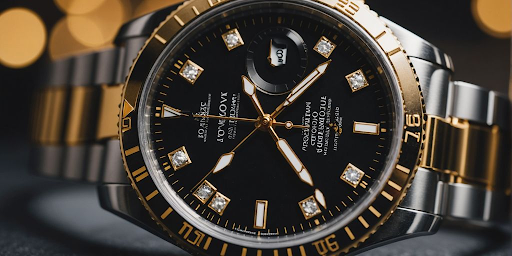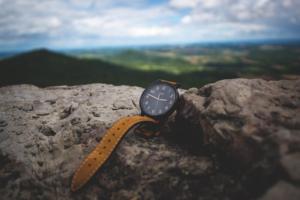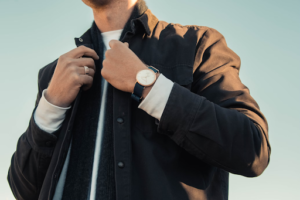FASHION
Perfect Rolex Watch: Myths vs. Reality

Rolex watches are known worldwide for their luxury and precision. However, with fame comes a lot of myths. In this article, we will uncover the truth behind some of the most common Rolex myths. Let’s dive in and separate fact from fiction about these iconic timepieces.
Key Takeaways
- The Rolex waiting list is real, but there are ways to get around it.
- Rolex watches do tick, but they have a unique movement that makes it hard to notice.
- James Bond did wear a Rolex Submariner, but he also wore other brands.
- Not all Rolex watches are handmade; technology plays a big role in their production.
- While some Rolex watches can increase in value, they should not be seen as guaranteed investments.
The Rolex Waiting List: Myth or Fact?
Understanding the Demand
The idea of a Rolex waiting list is often misunderstood. There isn’t a universal list where customers are noted down and receive their watches in order. Instead, each retailer manages their own list, and the process can vary widely. The high demand for Rolex watches means that getting your hands on one can be challenging.
How the Waiting List Works
Rolex retailers have their own methods for managing customer requests. Some prioritize loyal customers or those who have purchased multiple watches. Others may consider the relationship with the client or their history of purchases. It’s not a simple first-come, first-served system.
Alternatives to the Waiting List
If you’re not keen on waiting, there are other ways to get a Rolex. You can explore the pre-owned market, where many Rolex watches are available immediately. Another option is to consider less popular models, which might not have as long a wait time. Lastly, building a good relationship with a retailer can sometimes help you get your desired watch faster.
Do Rolex Watches Really Not Tick?
The Mechanics of Rolex Movements
A common belief is that Rolex watches don’t tick. However, every Rolex watch does tick. The difference lies in how they tick. Quartz movements, often found in cheaper watches, tick once per second. In contrast, a genuine Rolex has a mechanical movement that ticks eight times per second, creating the illusion of a smooth sweep.

Spotting a Fake Rolex
One trick to spot a fake Rolex is to look at the second hand. If it ticks once per second, it’s likely a fake. However, modern fake Rolex watches can have mechanical movements too. To be sure, you can check the feel of the wind through the crown. A real Rolex will feel smooth, while a fake might feel gritty. For absolute certainty, the movement should be inspected by a professional.
Common Misconceptions
Many people think that Rolex never made quartz watches, but that’s not true. While Rolex no longer makes quartz watches, they did in the past. The myth that Rolex watches don’t tick likely comes from the smooth sweep of their mechanical movements, which tick so quickly that it’s almost impossible to see.
James Bond’s Rolex Submariner: Truth or Fiction?
The History of Bond’s Watches
The Rolex Submariner is often linked with James Bond, but the story is more complex. When the first Bond movie was made, the production team couldn’t afford a Rolex. Instead, producer Albert Broccoli lent Sean Connery his own Submariner. This watch became iconic, even though it wasn’t originally planned.
Rolex’s Role in the Bond Franchise
Rolex didn’t initially provide watches for the Bond films. The Submariner’s appearance was more of a happy accident than a marketing strategy. Over time, the association grew stronger, making the Submariner one of the most famous watches in the world.
Other Watches Worn by 007
James Bond has worn various watches over the years, not just Rolex. Some of the other brands include:
- Omega
- Seiko
- Breitling
Each watch brought its own style and features to the character, showing that Bond’s choice of timepiece is as versatile as the spy himself.
Are All Rolex Watches Handmade?
The Manufacturing Process
Rolex watches are known for their high quality and precision. However, not every part of a Rolex watch is made by hand. Rolex combines both handcrafting and advanced technology to create their timepieces. While skilled artisans handle the intricate details, machines assist in tasks that require extreme precision.
Rolex’s Use of Technology
Rolex uses cutting-edge technology in their manufacturing process. Robots and automated systems are employed for tasks like sorting and assembling small parts. This ensures consistency and accuracy, which are crucial for maintaining the brand’s reputation. However, the final assembly and quality checks are done by hand to ensure each watch meets Rolex’s high standards.
Quality Control Measures
Rolex has strict quality control measures in place. Each watch undergoes rigorous testing to ensure it meets the brand’s exacting standards. This includes water resistance tests, accuracy checks, and visual inspections. The combination of human expertise and technological precision ensures that every Rolex watch is of the highest quality.
While technology plays a significant role, the human touch is essential in crafting a Rolex watch. This blend of tradition and innovation sets Rolex apart from replica rolex models.
The Myth of Rolex as an Investment
Historical Value Trends
Many people believe that buying a perfect Rolex is a guaranteed way to make money. While some models have increased in value over time, this isn’t always the case. The value of a Rolex can fluctuate based on various factors. For example, limited editions or discontinued models might see a spike in value, but this isn’t a rule for all Rolex watches.
Factors Affecting Resale Value
Several factors can impact the resale value of a Rolex. These include:
- Condition: A well-maintained watch will fetch a higher price.
- Rarity: Limited editions or rare models are more likely to appreciate.
- Market Demand: Popular models are easier to sell at a higher price.
- Documentation: Having the original box and papers can significantly boost value.
Investment vs. Passion Purchase
It’s essential to differentiate between buying a Rolex as an investment and buying one out of passion. If you’re purchasing a Rolex because you love the craftsmanship and design, you’ll likely be happier in the long run. Investing in a Rolex solely for financial gain can be risky.
While some Rolex watches do appreciate in value, it’s not a guaranteed investment. Enjoying your perfect Rolex for its beauty and craftsmanship is often the best approach.
Rolex and Water Resistance: Separating Fact from Fiction
Water resistance ratings on Rolex watches can be confusing. These ratings are measured in meters and indicate the depth at which a watch can be submerged without water entering the case. However, these ratings are often tested in controlled environments, not real-world conditions.

In everyday use, a Rolex watch’s water resistance can vary. Factors like temperature changes, exposure to chemicals, and the age of the watch can affect its performance. It’s important to regularly check the seals and gaskets to ensure they are intact.
To maintain your Rolex’s water resistance:
- Have it serviced regularly by a professional.
- Avoid exposing it to extreme temperatures or chemicals.
- Rinse it with fresh water after swimming in saltwater.
- Ensure the crown is always screwed down tightly.
Regular maintenance is key to keeping your Rolex water-resistant. Don’t skip those service appointments!
Conclusion
In the end, it’s clear that many myths about Rolex watches are just that—myths. While the brand does have a rich history and is known for its luxury and precision, not everything you hear is true. From the idea that all Rolex watches don’t tick to the myth of the endless waiting list, it’s important to separate fact from fiction. By understanding the reality behind these stories, you can better appreciate what makes a Rolex truly special. So next time you hear a wild tale about these iconic watches, you’ll know just what to believe.
Frequently Asked Questions
Is the Rolex waiting list real?
Yes, the Rolex waiting list is real. Due to high demand and limited supply, many popular models have long waiting lists.
Do Rolex watches tick?
Rolex watches do tick, but the movement is so smooth that it appears continuous. This is due to their high-quality mechanical movements.
Did James Bond wear a Rolex Submariner?
Yes, James Bond has worn a Rolex Submariner in several films. However, he has also worn other brands like Omega.
Are all Rolex watches handmade?
Not entirely. While Rolex watches involve a lot of hand assembly, they also use advanced machinery to ensure precision.
Is a Rolex a good investment?
Rolex watches can hold their value well, but they should not be seen purely as an investment. Passion and enjoyment should be the primary reasons for purchasing.
Are Rolex watches truly water-resistant?
Yes, Rolex watches are known for their water resistance. However, regular maintenance is necessary to ensure they remain water-resistant over time.
FASHION
Upgrade Your Wardrobe with Cherrykitten Fashion Today

Cherrykitten Fashion has become a go-to destination for style enthusiasts looking to upgrade their wardrobe with fun, trendy, and versatile pieces. Among the collection’s most popular items are y2k shirts and baby tees, which bring together the nostalgic charm of early-2000s fashion with modern design sensibilities. These staples are perfect for creating casual yet stylish outfits, layering with other clothing items, or making a bold fashion statement. With Cherrykitten Fashion, refreshing your wardrobe has never been easier, allowing you to experiment with new styles while keeping comfort and individuality in mind.
The beauty of Cherrykitten Fashion lies in its adaptability. Y2k shirts and baby tees can be styled with jeans, skirts, coordinated sets, or layered under dresses and jackets to create unique outfits suitable for any occasion. Whether updating your everyday essentials or seeking statement pieces for special events, Cherrykitten provides options that fit every style preference and personality.
Y2K Shirts: Bold, Playful, and Trendy
Y2k shirts have made a massive comeback, and Cherrykitten’s collection features a wide variety of designs that capture the early-2000s aesthetic. Characterized by cropped fits, vibrant colors, and fun graphics, these shirts are a perfect way to incorporate a retro vibe into a modern wardrobe.
Pairing y2k shirts with high-waisted pants, skirts, or shorts instantly elevates an outfit, making it trendy without appearing overdone. These shirts are also perfect for layering, whether under oversized jackets, cardigans, or slip dresses, adding depth and dimension to your look. Cherrykitten ensures that each y2k shirt combines quality and comfort, making them a wardrobe essential for fashion-forward shoppers.
Baby Tees: Flirty and Versatile
Baby tees are another staple in the Cherrykitten Fashion collection. Known for their cropped, fitted silhouette, these tops offer a flirty and youthful aesthetic that works well for everyday wear or special occasions. Baby tees are ideal for pairing with high-waisted jeans, skirts, shorts, or coordinated sets, giving you multiple styling options with just one piece.
Cherrykitten offers baby tees in an array of colors, patterns, and designs to suit various personal styles. They are perfect for layering under jackets, cardigans, or even slip dresses to create trendy, multi-dimensional outfits. Baby tees provide flexibility, comfort, and playful charm, making them a must-have for anyone looking to upgrade their wardrobe.
Coordinated Sets for Effortless Style
Cherrykitten Fashion also features coordinated sets designed to make outfit creation simple and stylish. These sets typically pair a matching top—often a y2k shirt or baby tee—with a skirt, shorts, or pants, creating a cohesive and fashionable look.
Coordinated sets are perfect for casual outings, social media photos, or weekend adventures. They allow you to achieve a polished, put-together outfit without spending hours mixing and matching. Cherrykitten ensures that each set balances comfort and style, making them practical yet trendy wardrobe additions.
Dresses and Statement Pieces
In addition to tops and coordinated sets, Cherrykitten offers dresses and statement pieces that complement the overall collection. From playful, bold prints to pastel, soft girl-inspired designs, these pieces add variety and dimension to your wardrobe. Dresses can be layered with y2k shirts or baby tees for unique, layered looks, while statement pieces such as jackets or skirts allow for mix-and-match creativity.
Cherrykitten’s designs ensure that every piece works harmoniously with others in the collection, enabling you to create versatile, stylish outfits without the hassle of complicated styling.
Seasonal Fashion Flexibility
Cherrykitten Fashion is designed to adapt to different seasons, making it easy to refresh your wardrobe year-round. During warmer months, y2k shirts and baby tees can be paired with skirts, shorts, or lightweight pants for casual, stylish looks. In cooler months, these tops can be layered under jackets, cardigans, or matching sets, ensuring comfort and warmth while maintaining a trendy aesthetic.
The ability to mix and match pieces allows shoppers to create seasonal outfits that are both fashionable and functional. Cherrykitten’s versatile designs make it easy to embrace new trends without overhauling your entire wardrobe.
Styling Tips for Upgraded Wardrobe Looks
Cherrykitten Fashion provides a wide range of styling options, allowing you to experiment and express your personality. Pair baby tees with pleated skirts and sneakers for a soft, playful look, or layer a y2k shirt under a slip dress for a trendy, layered outfit. Accessories like hair clips, layered necklaces, mini backpacks, and statement shoes can complete your ensemble and elevate your style.
Experimenting with textures, prints, and layering allows you to create unique, standout outfits using Cherrykitten pieces. Whether your style is soft girl, retro, streetwear, or a mix of aesthetics, the collection provides endless opportunities for creativity.
Comfort and Quality
A standout feature of Cherrykitten Fashion is the focus on comfort and quality. Soft fabrics, thoughtful cuts, and inclusive sizing ensure that y2k shirts, baby tees, and coordinated sets are comfortable for all-day wear. This emphasis on wearability means that upgrading your wardrobe does not come at the cost of practicality, allowing you to look fashionable while feeling confident.
The combination of style and comfort makes Cherrykitten Fashion ideal for school, work, social events, or casual outings, ensuring that every piece fits seamlessly into your lifestyle.
Affordable Fashion for Everyone
Cherrykitten Fashion offers stylish, high-quality clothing at accessible prices, making it easy for shoppers to explore new trends without overspending. By providing a range of designs, colors, and patterns, the brand allows fashion enthusiasts to experiment and express themselves freely. Affordable pieces like y2k shirts and baby tees encourage shoppers to build a versatile, stylish wardrobe without breaking the bank.
Shop Cherrykitten Online
Shopping Cherrykitten online is simple and convenient. The website features clear product images, detailed descriptions, and easy navigation, allowing shoppers to explore y2k shirts, baby tees, coordinated sets, dresses, and accessories. Frequent updates ensure that the latest trends and styling inspiration are always available.
Whether you are upgrading your wardrobe for a new season, creating content for social media, or simply refreshing your everyday style, Cherrykitten Fashion provides a curated selection of trendy pieces that make styling effortless and enjoyable.
Conclusion: Upgrade Your Wardrobe with Cherrykitten
Cherrykitten Fashion offers a wide variety of stylish, versatile, and playful pieces that allow shoppers to upgrade their wardrobe with ease. Featuring y2k shirts, baby tees, coordinated sets, dresses, and statement pieces, the brand ensures that every outfit is fashionable, comfortable, and adaptable. With affordable prices, quality fabrics, and creative designs, Cherrykitten makes it simple to embrace current trends, express individuality, and build a wardrobe full of trendy, must-have pieces. Shop Cherrykitten today to explore fashion that combines style, comfort, and personality.
FASHION
Top Unique Character T-Shirts Every Fan and Collector Must Have

Character T-shirts have become more than just wardrobe essentials—they are treasured pieces for fans, collectors, and pop culture enthusiasts. Whether inspired by movies, games, anime, science icons, or nostalgic cartoons, these shirts allow people to express their passion in a stylish and meaningful way. Today, unique character tees are considered wearable art, cherished by both casual fans and serious collectors. In this guide, we explore why these pieces hold such value, what styles stand out, and which types of geek t shirt deserve a place in your collection.
Why Character T-Shirts Are So Popular Among Fans
Character T-shirts allow fans to showcase the stories, heroes, and universes they love. They offer a simple yet powerful way to express identity—whether you’re inspired by a superhero, a game protagonist, or a cartoon character from childhood. These shirts also spark instant recognition among others who share similar interests, often creating connections and conversations. For collectors, character tees serve as unique memorabilia, carrying emotional and nostalgic value that goes far beyond their price.
What Makes a Character T-Shirt “Unique”?
Not all character tees are created equal. A unique T-shirt stands out due to one or more of the following qualities:
- Limited Edition Prints – Designs released exclusively for events, anniversaries, or collaborations.
- Artistic Illustrations – Hand-drawn, redesigned, or rare artwork you won’t find in mainstream stores.
- Mash-Up Concepts – Characters from different universes creatively blended into one masterpiece.
- Vintage or Retro Style – Old-school artwork, 8-bit graphics, or retro color palettes.
- Minimalist Symbolic Designs – Subtle icons or silhouettes that fans instantly recognize.
Collectors especially seek these unique styles because they represent creativity, rarity, and personal connection.
Must-Have Character T-Shirts for Every Fan and Collector
1. Classic Superhero Character Tees
Superhero-themed shirts never go out of style. Whether it’s a bold illustration of your favorite hero or a subtle logo design, these tees are staples for fans of comic universes. Limited edition artwork or crossover hero designs are especially sought after by collectors.
2. Retro Video Game Character T-Shirts
Fans of classic gaming love 8-bit or pixel-art character tees. Mario, Sonic, Zelda, Pac-Man, and other retro icons continue to dominate nostalgic collections. Modern remixes of old characters also create a blend of nostalgia and freshness.
3. Anime and Manga Character Shirts
Anime-inspired character tees are among the most expressive and colorful options. Detailed art prints featuring protagonists, villains, or iconic scenes make these shirts a must for anime fans. Limited drops from popular series often sell out quickly and become prized collector items.
4. Cartoon and Animated Character T-Shirts
From childhood favorites to modern animated icons, cartoon character tees carry a strong emotional appeal. Fans adore shirts that remind them of classic episodes, humorous moments, or beloved childhood memories.
5. Nerd Culture & Science Character Tees
Collectors who appreciate science, discovery, and intellect love character designs based on scientists, inventors, and educational icons. A clever nerd shirt featuring an astronaut, mathematician, or scientific symbol adds a smart twist to everyday fashion.
6. Minimalist and Symbolic Character Shirts
These designs don’t always show the full character, but instead use symbols, silhouettes, or shapes that fans immediately recognize. Minimalist character tees are perfect for people who prefer subtle and stylish designs while still celebrating their fandom.
Why Collectors Value High-Quality Character Tees
For collectors, quality matters just as much as design. A well-made character T-shirt ensures the artwork remains vivid, the fabric feels comfortable, and the shirt retains its shape even after multiple washes. High-quality printing—screen printing for bold graphics or digital printing for detailed art—is essential to keep the design looking sharp. Premium fabrics also offer durability, which is crucial for those who plan to keep or display their character tees long-term.
How to Style Character T-Shirts for Everyday Wear
One of the best things about character tees is how easy they are to style. Here are a few simple ideas:
- Casual Look: Pair your favorite character tee with jeans and sneakers.
- Streetwear Style: Opt for oversized character T-shirts, combined with joggers or cargo pants.
- Layered Outfit: Wear your character tee under an open flannel, denim jacket, or hoodie.
- Smart Casual: Match a minimalist character shirt with a blazer for a stylish yet subtle fandom look.
These versatile shirts work year-round and suit almost any personal style.
Character T-Shirts: The Perfect Gift for Fans
If you’re searching for the ideal gift for a fan or collector, a character T-shirt is a perfect choice. You can choose a design based on their favorite hero, game, anime, or scientific figure. These shirts are thoughtful, meaningful, and highly appreciated—especially when you pick a design that matches the receiver’s taste.
Conclusion
Unique character T-shirts are more than just printed shirts—they represent stories, emotions, and passions that fans deeply connect with. Whether you are a gamer, movie lover, anime fan, or collector of geek and nerd culture, these tees help you express your identity in a fun and stylish way. With endless styles, themes, and artistic options, there’s always a new design waiting to become your next favorite.
If you love collecting or expressing your fandom through fashion, character T-shirts are a must-have addition to your wardrobe and collection.
FASHION
Premium Cotton Hoodies and Shirts Tokyo-Tiger Style

Japanese t shirts have become a symbol of comfort, quality, and unique cultural style in modern streetwear, and Tokyo-Tiger builds on this tradition with its Premium Cotton Hoodies and Shirts collection. Designed for both everyday wear and expressive urban fashion, each piece pairs effortlessly with a Japan t shirt for versatile layering options. Whether you’re exploring city streets, attending social gatherings, or simply seeking stylish comfort, Tokyo-Tiger’s hoodies and shirts deliver high-quality fabrics, bold designs, and timeless Japanese-inspired aesthetics. With a blend of classic cotton materials and contemporary streetwear trends, this collection ensures that every outfit is both comfortable and visually striking.
High-Quality Cotton for Ultimate Comfort
The foundation of Tokyo-Tiger’s collection is premium cotton, carefully selected for its softness, breathability, and long-lasting durability. Japanese t shirts and Japan t shirt layers complement these hoodies and shirts perfectly, allowing for flexible styling options that suit any season. Lightweight cotton ensures comfort during warmer weather, while the hoodies provide warmth and protection during cooler days. Reinforced stitching and durable construction maintain the shape and integrity of each piece, making these hoodies and shirts reliable staples in any wardrobe.
Striking Japanese-Inspired Designs
Tokyo-Tiger’s Premium Cotton Hoodies and Shirts are celebrated for their bold, Japanese-inspired graphics. From traditional motifs and calligraphy to anime and manga references, each piece is designed to make a fashion statement while celebrating Japanese culture. Layering a Japanese t shirt or a Japan t shirt beneath a hoodie or shirt adds depth and versatility to your outfit, creating looks that are both unique and expressive. Minimalist designs cater to those seeking subtle elegance, while vibrant, detailed prints appeal to fans of streetwear and pop culture alike.
Versatile Styling Options
One of the strengths of Tokyo-Tiger’s collection is its adaptability. Shirts can be worn casually with jeans, shorts, or joggers, while hoodies provide layered warmth over Japanese t shirts or a Japan t shirt for a complete streetwear look. Relaxed and oversized fits create a modern, urban silhouette, while fitted styles offer a cleaner, tailored appearance. These pieces are designed to suit a variety of occasions—from casual outings and city adventures to social meetups and creative events—making them indispensable for anyone seeking practical yet fashionable streetwear.
Express Your Individuality Through Fashion
Streetwear is a form of self-expression, and Tokyo-Tiger’s Premium Cotton Hoodies and Shirts allow wearers to showcase their personality and cultural interests. Fans of Japanese pop culture, manga, anime, and modern art can select pieces that reflect their style. Layering Japanese t shirts or a Japan t shirt under a hoodie or shirt adds visual interest and creative flair, enabling wearers to craft outfits that stand out. Whether exploring urban spaces, attending conventions, or simply enjoying everyday activities, these pieces provide the perfect canvas for personal expression.
Limited Edition and Exclusive Pieces
Tokyo-Tiger frequently releases limited-edition hoodies and shirts featuring exclusive Japanese-inspired artwork. These designs appeal to collectors and fashion enthusiasts seeking distinctive wardrobe items. Pairing limited-edition pieces with Japanese t shirts or a Japan t shirt enhances layered streetwear outfits and ensures unique, memorable looks. The combination of high-quality materials, bold graphics, and exclusivity makes these items highly sought after for fashion-forward individuals who value originality and cultural inspiration in their clothing.
Durability Meets Style
Durability is a key feature of Tokyo-Tiger’s Premium Cotton Hoodies and Shirts. Premium fabrics, reinforced stitching, and professional-grade printing ensure that each piece maintains its shape, color, and design over time. Japanese t shirts and Japan t shirt layers pair seamlessly with these hoodies and shirts, creating long-lasting, stylish outfits suitable for everyday wear. This balance of durability and aesthetic appeal makes the collection ideal for streetwear enthusiasts seeking both functional and fashionable clothing.
Celebrate Japanese Culture in Everyday Fashion
Tokyo-Tiger’s collection allows wearers to incorporate Japanese culture into their everyday wardrobe. From bold graphics to anime and manga-inspired designs, the pieces reflect the rich artistic heritage of Japan while staying relevant to modern streetwear trends. Layering Japanese t shirts or a Japan t shirt under hoodies and shirts adds visual depth and versatility, creating outfits that are culturally inspired, stylish, and comfortable. This makes the collection ideal for anyone looking to combine fashion, comfort, and cultural appreciation in one cohesive streetwear look.
Conclusion: Elevate Your Wardrobe with Tokyo-Tiger
The Tokyo-Tiger Premium Cotton Hoodies and Shirts collection offers the perfect combination of comfort, durability, and Japanese-inspired style. With high-quality fabrics, bold designs, and versatile layering options, these Japanese t shirts and Japan t shirt-inspired pieces provide endless possibilities for creating expressive streetwear outfits. Whether worn alone or layered for a dynamic urban look, Tokyo-Tiger hoodies and shirts allow wearers to express individuality, celebrate Japanese culture, and stay comfortable in any setting. Explore the collection to elevate your wardrobe with high-quality, culturally inspired streetwear essentials that seamlessly combine fashion, comfort, and personality.

 Cartoon5 months ago
Cartoon5 months agoUnlocking the Potential of Nekopoi.care: A Comprehensive Guide

 Game2 years ago
Game2 years agoExploring Aopickleballthietke.com: Your Ultimate Pickleball Destination

 BUSINESS2 years ago
BUSINESS2 years agoUnraveling the Mystery of 405 Howard Street San Francisco charge on Credit Card

 BUSINESS5 months ago
BUSINESS5 months agoWhat Companies Are In The Consumer Services Field

 HOME IMPROVEMENT2 years ago
HOME IMPROVEMENT2 years agoVtrahe vs. Other Platforms: Which One Reigns Supreme?

 ENTERTAINMENT1 year ago
ENTERTAINMENT1 year agoUnderstanding Bunkr Album: A Comprehensive Guide

 ENTERTAINMENT2 years ago
ENTERTAINMENT2 years agoThe Ultimate Guide to MP3Juices: Free Music Download

 HEALTH2 years ago
HEALTH2 years agoWegovy: Important Information and Prescription Instructions


















